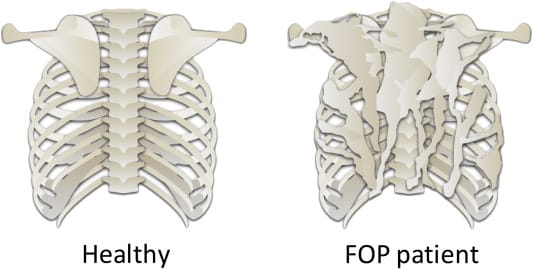
Lexi Robins, a five-month-old baby in the UK is turning intto stone as a result of an extremely rare disease. Fibrodysplasia Ossificans Progressiva (FOP) is a rare genetic disease that affects just one in every two million people. The disease turns muscles into bones and leads to extreme pain.
All about Lexi Robins
The little girl, born on January 31, seems like any other normal baby. However, she has larger than normal-sized toes and did not move her thumbs. A visit to the doctors from the concerned parents proved that she had a rare and life-limiting disease called Fibrodysplasia Ossificans Progressiva. The rare disease is found in about 800 to 1000 people in the world. Lexi’s recent X-rays showed that she has double-jointed thumbs and bunions on her feet.
What is this rare disease all about?

Fibrodysplasia Ossificans Progressiva or FOP is a genetic disorder of soft connective tissue, making them turn into bone. It results from a mutation in the ACVR1 gene involved in the development and growth of bones. However, this mutation leaves their growth unchecked. (Zolpidem)
Most people with FOP become severely disabled. Some common symptoms of this rare disease include bone overgrowth, initially in the neck and shoulders. However, it limits movement as it grows into joins. In addition, if the growth of bones takes place in the chest, it can restrict breathing. Bone growth reduced movement and makes tasks like eating difficult. Poor blood flow and hearing impairment are also seen. Additionally, the movement restriction makes people with FOP more prone to injury and fracture. They will need a wheelchair by the end of their 20s and have a median lifespan of 40s.
Is there a treatment for FOP?

Unfortunately, there are no treatments for FOP at the moment. However, there is medication to manage symptoms like inflammation and pain, associated with this rare disease. Hence, patients are treated with corticosteroids and anti-inflammatory drugs. Additionally, they also need occupational therapy, braces, and special shoes for better mobility.
You might wonder if the new bones can be surgically removed. It is possible but, surgery results in more bone growth. Hence, surgery is useless. This chronic disease does not have a cure. But treatment can help ease the symptoms.






